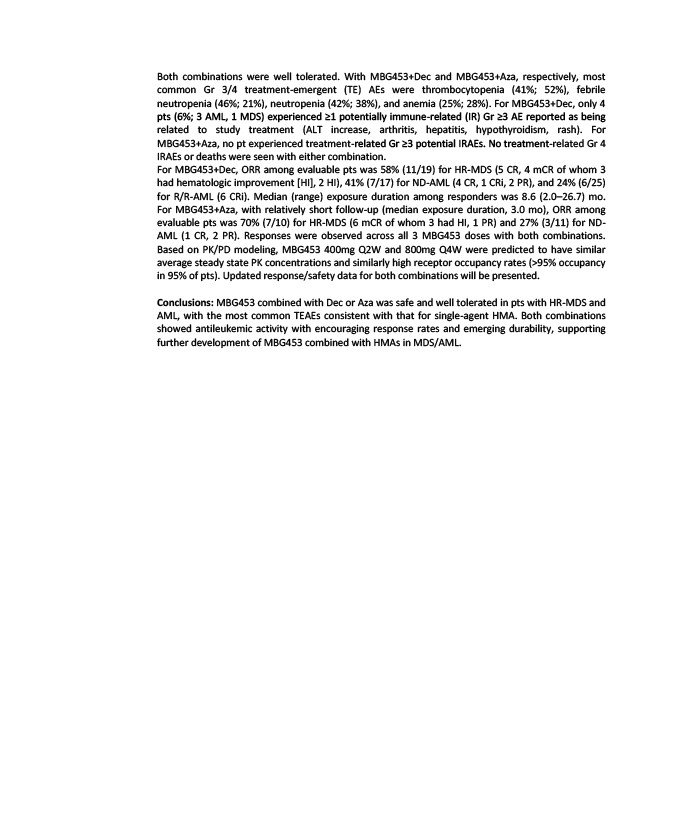
Both combinations were well tolerated. With MBG453+Dec and MBG453+Aza, respectively, most
common Gr 3/4 treatment-emergent (TE) AEs were thrombocytopenia (41%; 52%), febrile
neutropenia (46%; 21%), neutropenia (42%; 38%), and anemia (25%; 28%). For MBG453+Dec, only 4
pts (6%; 3 AML, 1 MDS) experienced ≥1 potentially immune-related (IR) Gr ≥3 AE reported as being
related to study treatment (ALT increase, arthritis, hepatitis, hypothyroidism, rash). For
MBG453+Aza, no pt experienced treatment-related Gr ≥3 potential IRAEs. No treatment-related Gr 4
IRAEs or deaths were seen with either combination.
For MBG453+Dec, ORR among evaluable pts was 58% (11/19) for HR-MDS (5 CR, 4 mCR of whom 3
had hematologic improvement HI, 2 HI), 41% (7/17) for ND-AML (4 CR, 1 CRi, 2 PR), and 24% (6/25)
for R/R-AML (6 CRi). Median (range) exposure duration among responders was 8.6 (2.0–26.7) mo.
For MBG453+Aza, with relatively short follow-up (median exposure duration, 3.0 mo), ORR among
evaluable pts was 70% (7/10) for HR-MDS (6 mCR of whom 3 had HI, 1 PR) and 27% (3/11) for ND-AML
(1 CR, 2 PR). Responses were observed across all 3 MBG453 doses with both combinations.
Based on PK/PD modeling, MBG453 400mg Q2W and 800mg Q4W were predicted to have similar
average steady state PK concentrations and similarly high receptor occupancy rates (>95% occupancy
in 95% of pts). Updated response/safety data for both combinations will be presented.
C
onclusions: MBG453 combined with Dec or Aza was safe and well tolerated in pts with HR-MDS and
AML, with the most common TEAEs consistent with that for single-agent HMA. Both combinations
showed antileukemic activity with encouraging response rates and emerging durability, supporting
further development of MBG453 combined with HMAs in MDS/AML.